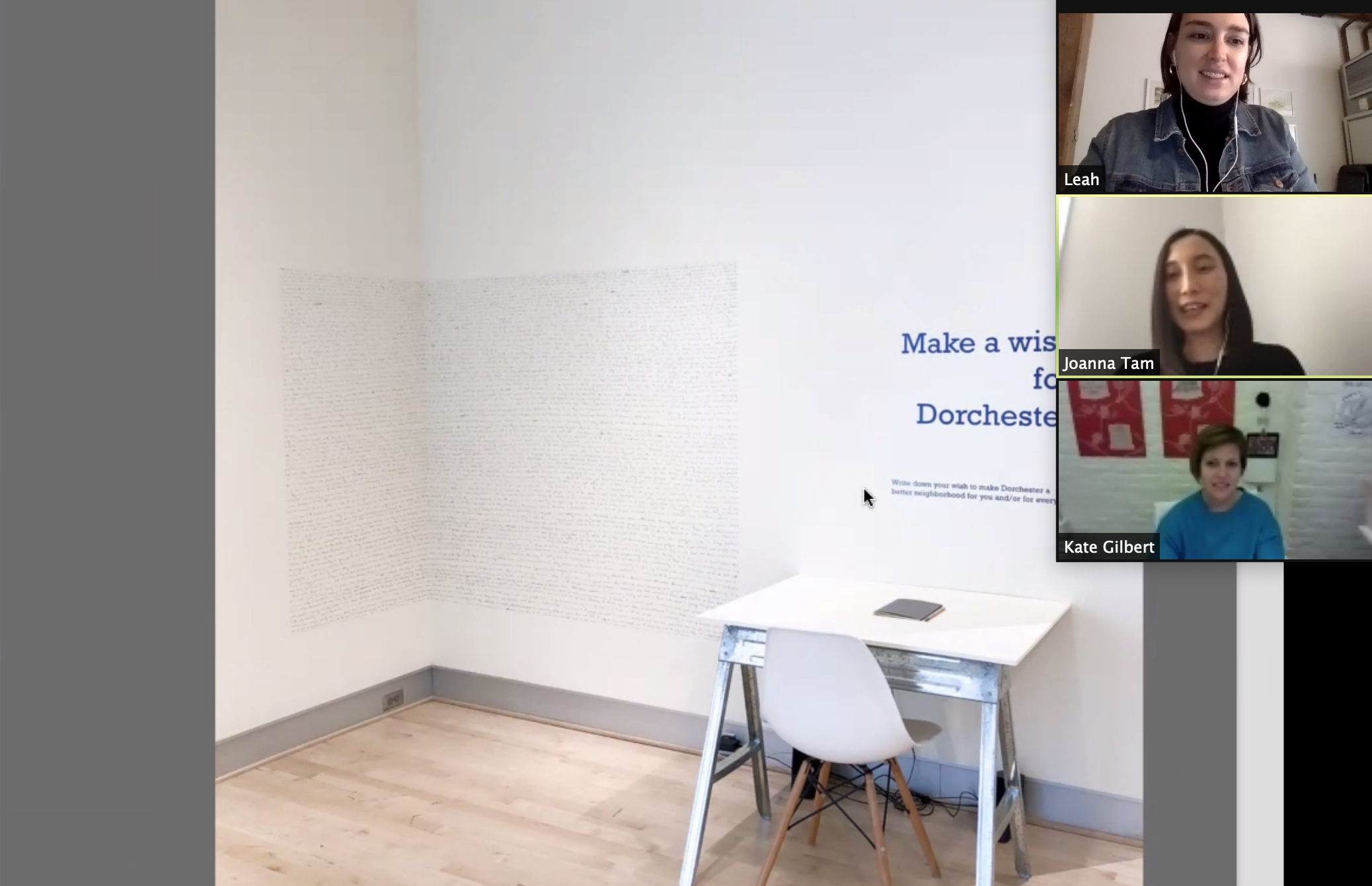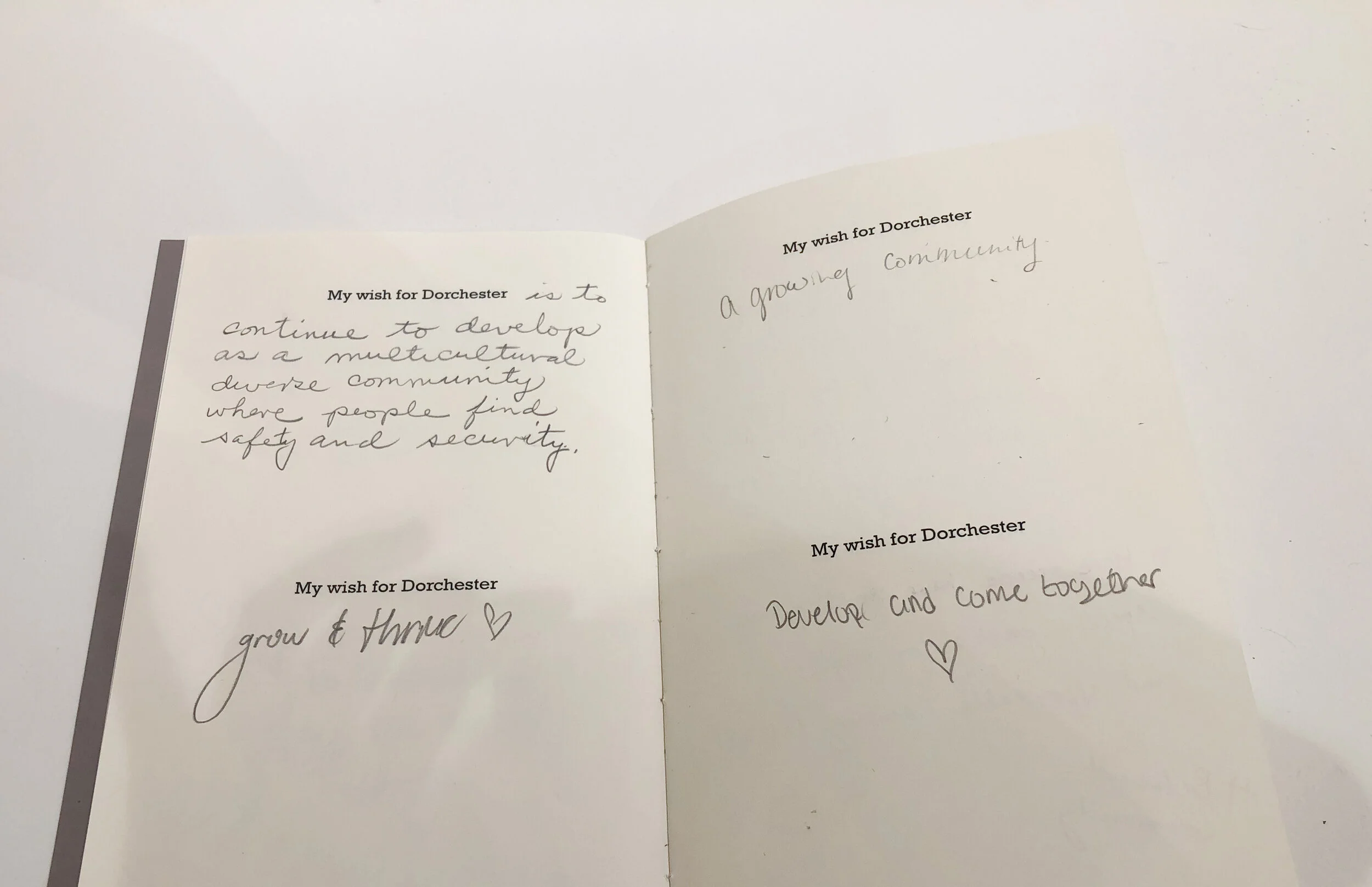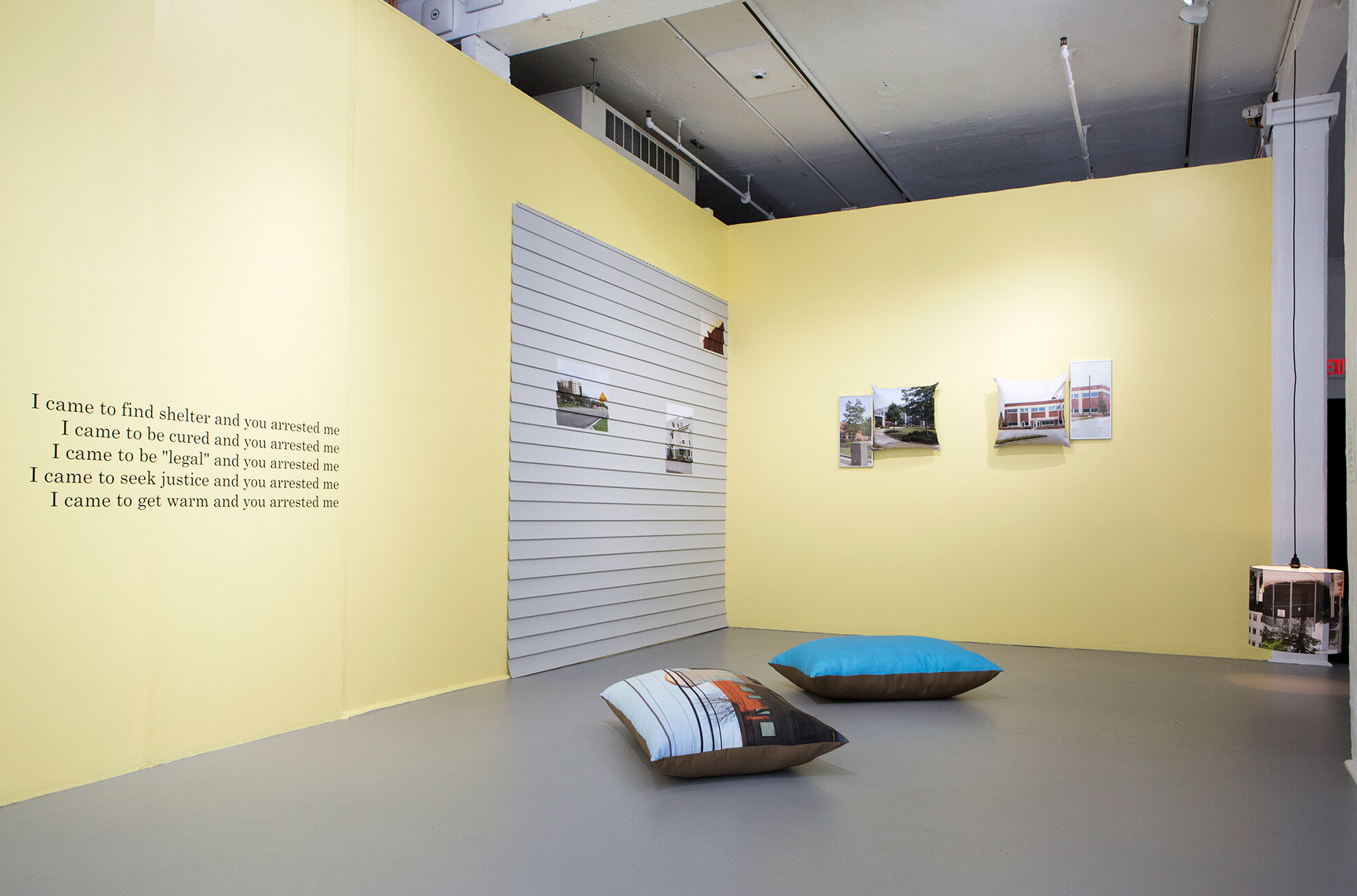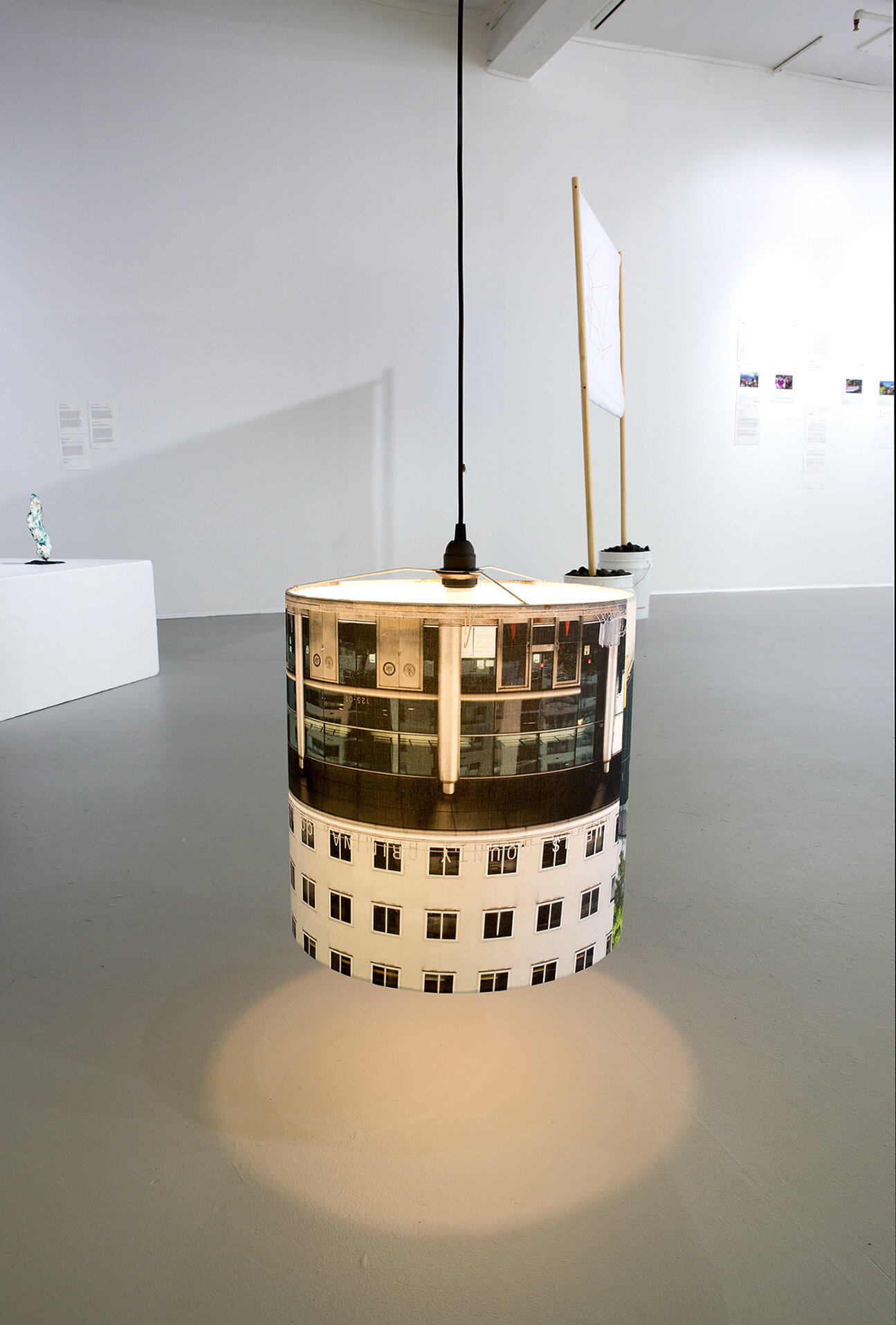Studio visits are a vital part of our artist-driven curatorial approach. It's a chance for us to hear directly from artists about how they are thinking, feeling, and making, and to see what they are working on. We meet artists at every stage of their career, and in any stage of a project, and in any space that's workable for them (yes, that includes living rooms!). Though every studio visit is different, these meetings are always a chance for us to get inside the artist's mind and show that we care about their work. Though COVID-19 has halted in-person visits of any kind, we are jumping into virtual visits with artists from Boston and beyond whose work has an important message for the public. For our second edition, we meet with Hong Kong-born and Boston-based interdisciplinary artist Joanna Tam.
In these days of restricted touch, hearing another's voice feels particularly powerful and reassuring. For me, sounds outside my window are little reminders of normalcy, and hearing someone's voice via phone, without video, feels old-school and comfortable. Hearing, in general, is a sense that I'm particularly grateful and privileged to have right now.
Human voices figured prominently in one of Joanna Tam's most recent works, Make a Wish for Dorchester, on view pre-quarantine in Dot Now at UMass Boston's University Hall Gallery. I spent time with the piece during the show's opening, and Joanna and I made tentative plans for a studio visit. Little did we know what the spring would hold, but I didn't want physical distancing to delay our visit. We met online with N+T executive director Kate Gilbert to talk about Joanna’s performance-participatory hybrid works, many of which probe, in her words, the "sonic quality of human voices."
For Make a Wish for Dorchester, Joanna asked twelve residents of Dorchester about their wishes for their community. The recordings accompanied a textual wall drawing that repeatedly transcribes those wishes. Importantly, Joanna features the interviewees’ own voice before translating their wishes through her own hand.
Top: Now + There Assistant Curator, Leah Triplett Harrington; Middle: artist Joanna Tam; Bottom: Now + There Founder and Executive Director, Kate Gilbert
Many interviewees wished for more understanding from people who don’t live in Dorchester, which is among Boston’s most racially and culturally diverse neighborhoods. One participant said, "I wish that Dorchester would stay diverse and Dorchester would become a destination," while another said, "I want Dorchester to be more appreciated by everyone.” Others wish for more inter-community dialogue and collaboration, or more affordable housing and housing security.
Make a wish for Dorchester, 2019.
Joanna does not shy away from approaching social issues or identity politics in her work. I've long admired her for this, and for her activism around immigration rights. We talked about another work that grapples with both, I just want a home (2018), which was exhibited at the Mills Gallery two summers ago. The installation was meant to reflect on immigration policy as well as one reason that drives global migration: the search for safe homes. Says Joanna in her statement on the piece, “the fear caused by the current immigration policy has kept immigrants, who are here to find new homes, away from places where they should feel protected.”
I just want a home (installation view), 2018. Self-adhesive digital prints, vinyl sidings, handmade pillows, framed photographs, handmade lamp shade, plug-in light cord, light bulb, cut vinyl text.
Joanna works from her own experiences of immigrating to Boston from Hong Kong. Like many, she originally came to study (with a focus on computer science before switching to art). She shared with Kate and me about her own perspective and frustration of feeling like she’s being seen as a “foreigner” instead of an individual. I see this experience informing I just want a home, which blends Joanna’s familiar media of text and photography with sculptural objects in the form of pillows, a lamp, and aluminum housing siding. As a whole, the installation speaks to an unresolved dividedness, of feeling simultaneously comfortable and precarious. In Joanna’s words in her statement, “The way that these objects are placed and installed is meant to communicate both a sense of comfort and a sense of eerie feeling at the same time.”
I just want a home, (United States Citizenship and Immigration Services Offices), 2018. Framed photos, handmade pillows.
Seeing I just want a home last summer, I was most drawn to the pillows on the wall. These throw pillows featured images of government immigration buildings, their sterile facades contrasting the obvious softness of the pillows. Each pillow was installed next to straight-on, antiseptic photos of immigration buildings, plainly framed. Joanna explained that the piece came from her anger at the current U.S. government for their treatment of immigrants and migrants.
I just want a home, (detail), 2018. Handmade lamp.
As she discussed her interest in examining the bureaucratic, often inhumane immigration processes, I noticed that the pillows bring a reminder of humanity to the work. A pillow is where one lays their head, and these buildings are where people go to find homes. But a pillow can also be something to punch if we’re angry.
Near the pillows was a lamp with a shade collaged with photos of upside-down immigration buildings. The lamp was so low to the ground that it only dimly lit the room; however, just under the lamp, the floor was fully illuminated, spot-lit. The piece reflects both the opacity of the immigration process as well as the intense scrutiny immigrants can experience.
When we met, Joanna was pondering how to make art without a lot of technology and the possibilities of home windows for exhibitions. Though she wasn’t actively making, she was doing a lot of thinking and listening. When I asked what she felt most hopeful about at this time, she said she finds hope in the “kindness, the courage and the resilience of many young artists, young community organizers, and young activists.” Seems fitting that she finds strength and wisdom in the voices of others.
Learn more and help Joanna during COVID-19! Check out her website and consider making a gift to Movimiento Cosecha (or the local Massachusetts chapter), a non-violent movement fighting for permanent protection, dignity, and respect for the 11 million undocumented immigrants in the United States. Joanna learned about the group when making I just want a home.






